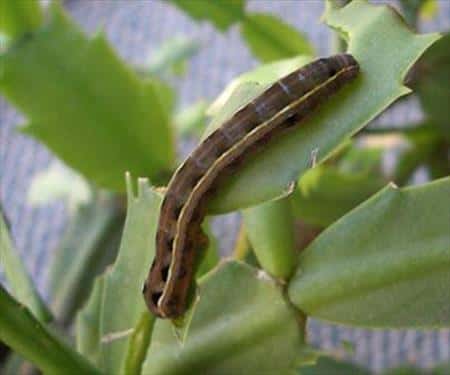Your Cart


What are Cutworms?
Cutworms are large, plump, grayish-green and brown larvae which viciously chew on grass plants. They live on the soil surface or in the thatch layer. During the day, they burrow into vertical holes to hide, but when nightfall arrives, they emerge from their burrowed hole and feed on the grass blades at the rim of the hole. Stems, leaves, and roots of the grass plants may be injured, resulting in yellowish-brown dead patches on the lawn that have a hollow hole in the middle, and the grass may be pulled away easily by hand.
The adult Cutworm appears in the spring as a grayish/brown moth with a 1 to 1 ½" wingspan. Fortunately, adult cutworms do not damage lawns. However, they do lay eggs in the spring during the night on grass blades. Larvae emerge and begin feeding as early as June, with visible damage appearing in June or July.
- There are a few things that you can look for in order to determine if you have a cutworm problem:
- The lawn has symptoms of dryness, and watering does not remedy the issue.
- You notice an increased presence of birds. Starlings have a keen ability to locate cutworm larvae. When these birds frequently return to an area, cutworm larvae may be present.
The name webworm is derived from the insect's habit of lining its tunnel with a silk-like material they produce. The immature or larvae stage of the sod webworm is as long as ¾" and are white or tan-coloured, with many having rows of dark spots along their backs. As with Cutworm damage, damage from Sod Webworms appears similar to that of dryness. As larvae, webworms construct tunnels or burrows throughout the thatch layer, sometimes extending into the soil.
Sod Webworm adults are small, tan moths that are ½ to ¾" in length. The adults are frequently seen darting across the lawn, especially when disturbed. Though the moths do not harm the lawn, they emerge in May or June, flying mainly during the evening hours, and lay eggs randomly throughout the lawn. The larvae emerge from the egg and begin feeding immediately. Damage is caused by larvae chewing off grass stems and leaves while feeding during the summer and into early fall. The dead patches of grass pull away easily in clumps revealing masses of silk with the green excrement pellets left by larvae.
The best time to treat Cutworm and Sod Webworm is in the months of June or July when they are very young before severe damage occurs. By early fall, they begin to transform into adults. In the adult stage, they are very difficult to control. If you notice suspicious brown patches starting to appear in the lawn, do not hesitate. Call your local Weed Man Professional for a free healthy lawn analysis. Weed Man can verify the presence of a potentially damaging infestation, discuss preventative measures and recommend treatment if required. Consult your local Weed Man Professional to discuss all options with respect to dealing with insects in your lawn.